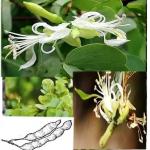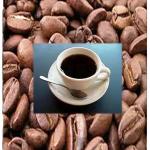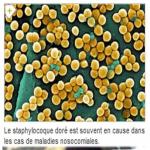Good and bad cholesterol
Understand the concept of good or bad cholesterol.
Understand the concept of cholesterol
Cholesterol is a molecule belonging to the sterol family. It can be associated with a fatty acid (esterified cholesterol) and can also exist in a free state. One third comes from our diet and two thirds are made by the liver. This molecule is used by our cells for the manufacture of membranes, certain hormones, bile salts or vitamin D. It is not soluble in the blood and absorbed with food or produced by the liver, cholesterol is transported to the different cells of the body by special carriers: lipoproteins (fat + protein). These molecules are in charge of transporting cholesterol and other fats like triglycerides from the liver to the cells and from the cells to the liver. Several types of carriers, of different density and very different roles are involved: LDL (low density lipoproteins) and HDL (high density lipoproteins) lipoproteins. This is why we distinguish HDL-cholesterol and LDL-cholesterol, together forming total cholesterol. LDLs leave the liver and bring cholesterol to the cells and HDLs do the opposite.
-LDL transport cholesterol from the liver to the cells, but this may be present in excess due to excessive production by our body, excessive use of animal fat, lack of use or a drainage problem. The excess LDL cholesterol then hangs around in the circulation and can be deposited in the walls of the arteries). It then forms, little by little, real fatty plaques, called atheromas. This is called "bad cholesterol". This accumulation of LDL cholesterol can lead to the formation of a plaque that gradually increases in volume until it narrows the duct of the artery, much like limestone plaques invade water pipes. This plaque can rupture and promote the occurrence of a clot (infarction)
- HDL recovers cholesterol in organs that have too much to bring it back to the liver where it is eliminated by bile or recycled. They have the ability to clean, within the limits of their possibility, our arteries of all poor quality lipid deposits and reduce the risk of seeing atheromatous plaque appear. We talk about "good cholesterol". When HDL cholesterol is very high, it has a beneficial effect by flushing cholesterol to the liver.
The word "cholesterol" refers to a single molecule. This means that the terms "good" and "bad cholesterol" are not used to designate two different molecules, but refer to HDL and LDL, the carriers of cholesterol in the blood and this is how it should be understood. bad cholesterol which is excess cholesterol that is harmful to the blood and arteries, so cholesterol remains good when it is not in excess.
Conclusion: The regulation of cholesterol metabolism depends on its combinations with fatty acids of animal or vegetable origin provided by food. The higher the consumption of animal fat rich in saturated fatty substances, the more the cholesterol which enters into combination with them is stable, heavy, massive and difficult to dissociate. On the other hand, the combination between cholesterol and fatty substances of vegetable origin rich in unsaturated fatty acids is easy to dissociate. Cholesterol levels are lowered when animal fats are replaced by vegetable fats rich in unsaturated fatty acids (75% walnut oil, 60% sunflower oil, 55% corn oil, 50% soybean oil, 25% peanut oil, olives 15%). The opposite is obtained with fats rich in saturated fatty acids (animal fats, cooked fats, margarine, etc.). In conclusion we must prefer the vegetable oils (ci-possible village and non-industrial) rich in unsaturated fatty substances mentioned above. Cholesterol levels are very closely related to the consumption of dietary fat and it is at this level that bad cholesterol or good cholesterol should be placed or considered. It is up to everyone to know how to choose their foods for their own health.
--The foods that raise LDL cholesterol (or bad cholesterol) the most are foods that are high in saturated fat and trans fat: fatty meats, shrimp, animal fats, organ meats, pastries, deli meats, egg yolks, whole milk products, butter, lard, coconut, palm and palm kernel oil, fast food dishes, snack foods, hydrogenated vegetable oil We need to reduce the consumption of these
--Foods that lower LDL cholesterol and promote good cholesterol are foods that are low in saturated fat: soluble fiber (found in oatmeal, kidney beans, Brussels sprouts, apples, pears, psyllium, barley and plums); polyunsaturated fatty acids (found in foods like nuts and almonds); Omega-3 fatty acids (found in fish – especially mackerel, lake trout, herring, sardines, yellowfin tuna and salmon – flax seeds, canola and soy); and plant sterols. We must increase the consumption of these foods for our well being.
Add a comment








